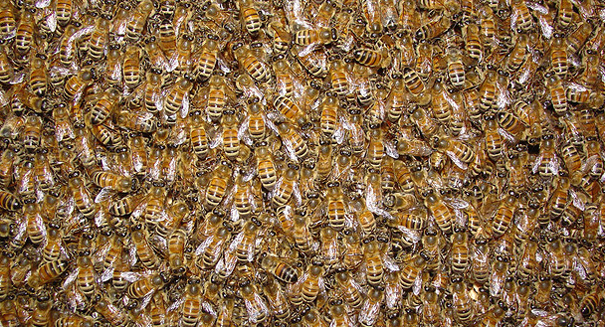
A breakthrough in immunity research could save the bees and other egg-laying species.
Researchers from Arizona State University, working with colleagues from the Norwegian University of Life Science, University of Helsinki, and University of Jyväskylä, have traced the mechanism on how bees transmit immune response from one generation to the next. Their findings appeared Friday in the Journal PLOS.
“The process by which bees transfer immunity to their babies was a big mystery until now. What we found is that it’s as simple as eating,” said co-author Gro Amdam. Co-author Dallai Fretak added, “I have been working on bee immune priming since the start of my doctoral studies. Now almost 10 years later, I feel like I’ve solved an important part of the puzzle. It’s a wonderful and very rewarding feeling!”
Worker bees accumulate pathogens from outside the hive and bring them back, where this pollen creates “royal jelly” food for the queen, who rarely leaves, and includes the outside bacteria. The queen has an organ called the “fat body”, which operates in a fashion not unlike our livers. There, the bacteria binds to a protein called vitellogenin (VG), and is thus transferred to developing eggs.
Now that they know how immunity response is transmitted, it opens the door to figuring out how to augment the process for bees. One disease of concern is the American Foul Brood, which spreads rapidly and results in hive destruction by infecting bee larvae through spore contamination.
“We are patenting a way to produce a harmless vaccine, as well as how to cultivate the vaccines and introduce them to bee hives through a cocktail the bees would eat. They would then be able to stave off disease,” said Freitak.
This could help well-publicized trends of bees population concern: bee colonies have declined to 2.5 million from 6 million in 1947 .
In addition, the study could have wider implications. All egg-laying species have the protein in their bodies, according to a press release accompanying the study issued by ASU.
The researchers validated the process by verifying through fluorescence microscopy to observe the binding of bacteria to VG, verifying VG transport to the young, and concluding that this transport was “sufficient and necessary” immune priming.